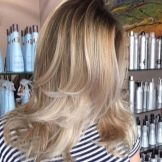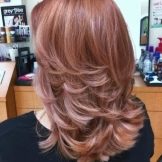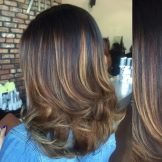Graduated cascade: who suits and examples of styling
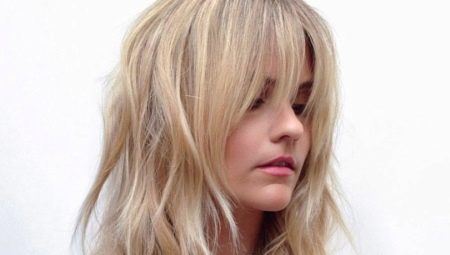
Graduated cascade is a trendy and interesting hairstyle that visually increases hair volume. It suits both short and medium or long hair. With a graduated cascade haircut, any of your looks will become unique and inimitable.
Peculiarities
The hairstyle consists of smoothly transitioning steps, between which graduation is performed - the hair is cut at a certain angle. This technique is similar to the step (ladder) technique, but there are differences.
- The boundaries of the steps are clearly visible. They are almost invisible in the ladder.
- Complexity. For the cascade, the master needs skill, while the ladder is considered an easy haircut.
- Square. The cascade captures all strands, and the ladder only captures the edges of the hair.
- Time. A cascade requires more than a ladder. This is based on the previous differences.
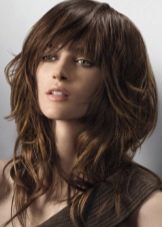
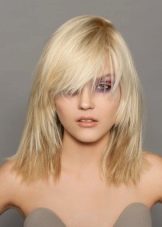
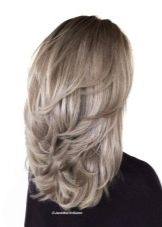
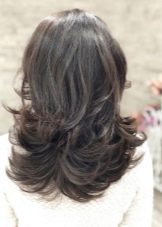
Pros of a graduated cascade:
- rejuvenates;
- partially hides skin imperfections;
- emphasizes the cheekbones;
- suitable for coloring;
- has many variations;
- versatility.

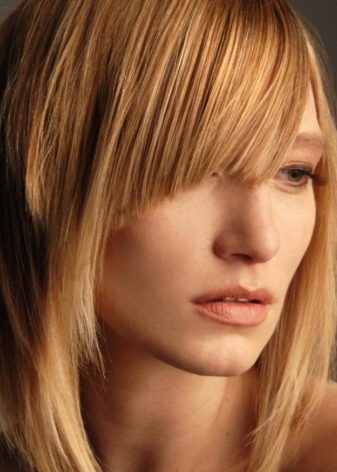
This hairstyle has also been loved by many stars and celebrities, for example, Emma Watson, Alexis Bledel, Natalie Portman, Jennifer Aniston, Angelina Jolie, Milla Jovovich, Jessica Alba, Olivia Wilde.
Who is it for?
A haircut suits almost everyone.
For those with thick hair, hairdressers suggest thinning the strands at the roots, thereby creating a light and harmonious shape.
The cascade looks good on owners of straight or slightly wavy hair. If you have curly hair, it is better to start the graduation from the level of the ears so that the curls do not curl or rise.
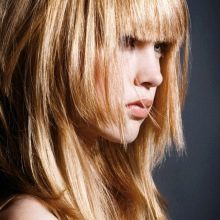
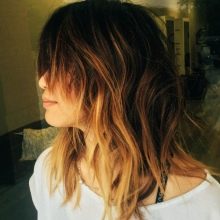
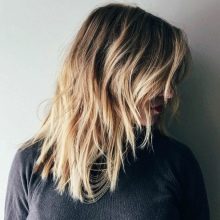
For short hair
This length is perfect for business girls and will bring lightness to the image.Thinning is also a good way to improve hair health.
An open neck and a defiant hairstyle emphasize the courage and independence of the owner of a short haircut.
On short hair, it is perfect for women with an "oval" face shape, long bangs, laid on one side, visually stretches the face.
The graduated cascade with curled ends looks unusually romantic.
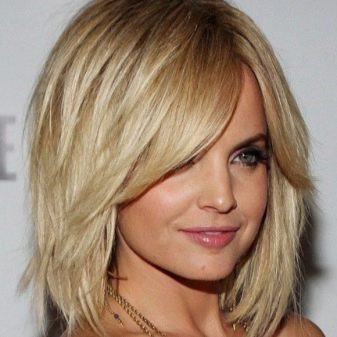
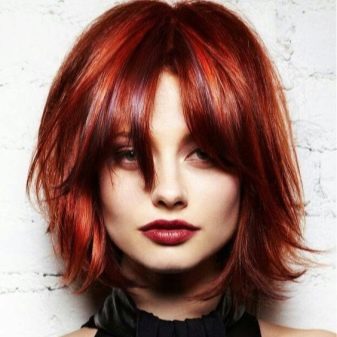
For medium hair
This is an indispensable option for those who are constantly at work, but nevertheless want to look feminine and fashionable. The hairstyle does not require careful maintenance. When creating it, the hairdresser touches all the hair, so this is also a great reason to eliminate split ends. A cascade at this length allows you to create a festive hairstyle.
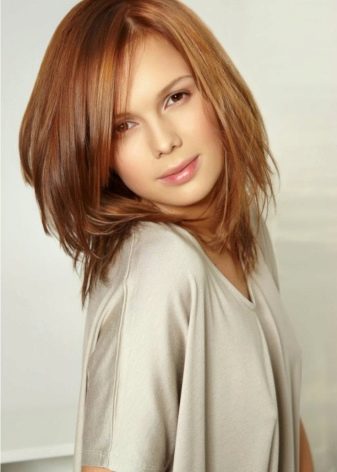
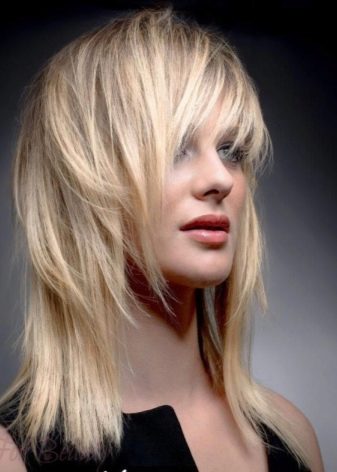
Long hair
Long hair is undoubtedly the best feminine adornment, but well-styled hair is the most spectacular. They also add femininity and fragility.
The cascade can go from any level - from the level of the ears to the middle and lower levels. In the first case, the neck visually becomes thinner and the volume of the hair increases, while their length remains the same. And in the second - a light and gentle cascade is obtained.


On thin hair
If you have sparse hair, then you need to be careful with this haircut, because you get sparse ends. In this case, the hairdresser begins the graduation from the very top.
Therefore, for owners of thin hair, graduation is most often done mainly on the upper strands, and the lower strands are not affected.
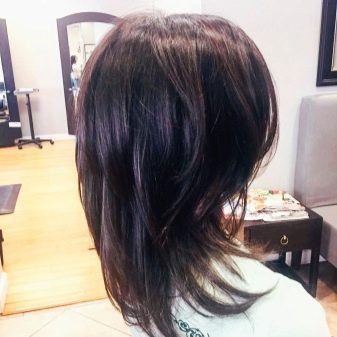
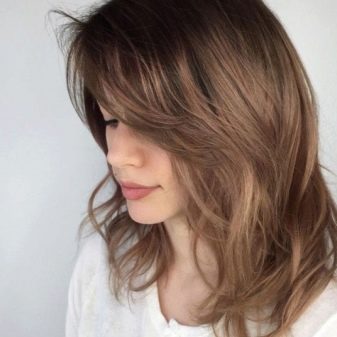
Bangs as an element of the hairstyle
The graduated cascade looks great with a wide variety of bangs and suits most women. Many hairdressers recognized the bangs as a faithful companion of this haircut and noted its property to rejuvenate the hostess.
There are the following suitable types of bangs:
- short;
- straight, symmetrical;
- elongated;
- torn;
- arcuate;
- multilayer;
- with graduation.
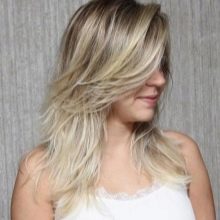
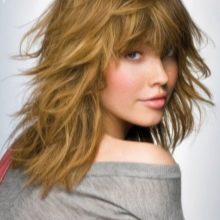
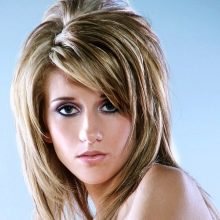
Bangs have a number of strong advantages, such as giving the look depth and mystery, the face - thinness, hiding some skin imperfections.
However, to maintain the look, you need to take care of your bangs. For some, this becomes a significant problem, for others - an integral part of the image. For short hair, side or long bangs work well, and straight, torn and arched bangs are more suitable for a cascade on medium or long hair.
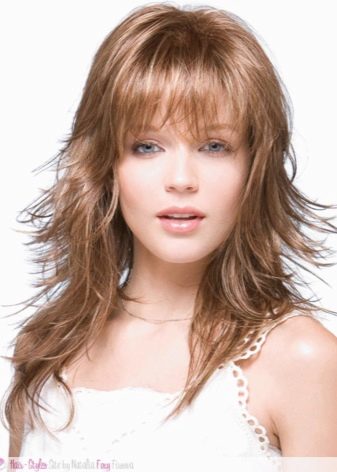
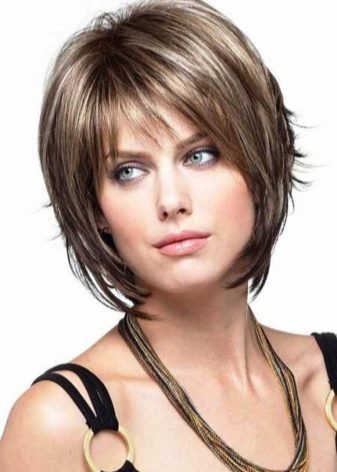
Direct bangs can be advised for owners of a long face, as it will slightly conceal part of the face and make it a little wider.
Concave arcuate the bangs are characterized by longer strands on the sides and shorter ones in the middle. She looks good with fairly round and short haircuts, blending beautifully into long strands near the face.
Torn the bangs are very textured, multi-layered, the strands are taken in different lengths, looks good with short and medium haircuts. It's important to consider what you are wearing and how the outfit will go with your hair.


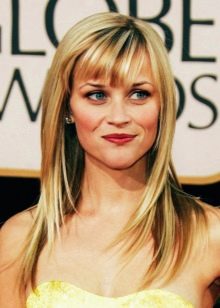
Very short bangs make the face wider. Looks good with long or medium hair, brings boldness and extreme to the image.
Elongated bangs are straight bangs up to the eyebrows. She is very popular, but needs attention.
Asymmetric the bangs can be either simply combed to one side or cut asymmetrically. She, in turn, has many variations. Smooth, ripped, thick, structured, smooth, wavy - these are all the variations that flow from this bang.

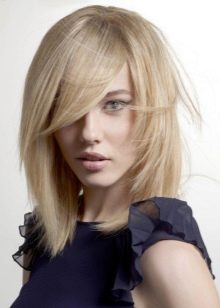
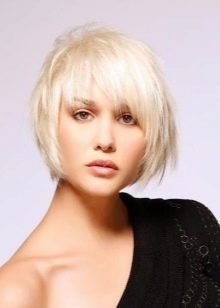
Very elongated bangs will help you cope with doubts about whether to bang or not, it has many advantages. Any experiment will become painless - it can be easily hidden in the tail, stabbed or combed behind the ears. Long bangs grow back smoothly and won't annoy you often. She doesn't change her face much. Bulky bangs in this case will require long styling and the use of mousses that would not weigh it down.
Any bangs in the first place should be combined with the bulk of the hair, and not live its own life.
Equally important, more complex bangs are given more time during styling.
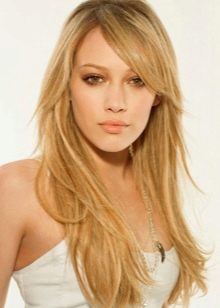
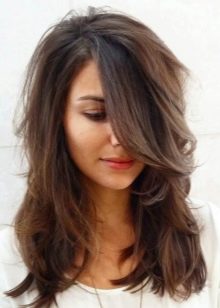
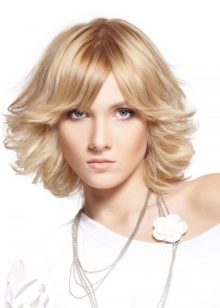
Execution Basics
There are a lot of ways to create a graduated cascade haircut. They all vary in complexity. One of the main and simplest methods will be discussed below.
- Start by combing and treating your hair with a volume spray.
- The hair is divided into two parts and a central part is outlined. They start from the back of the head. Thick strands are separated and pulled down, cut evenly.
- Further, the connection with the side zones gradually begins. The strands are cut in a square shape, thus the entire zone is worked through.
- Strands are captured from the top of the back of the head, the parting lines should be parallel. The hair is combed and trimmed again. The length of the strands on the left, center and right side should be the same at every step.
- The evenness of the strands is checked, for this the leftmost and rightmost small strands are pulled down and brought to the middle. If they come together exactly, then their length is the same.
- The upper left and right parts ("horseshoe") are separated, the lower side strands are being worked out.
- Then the separated parts are combed down, work on them in the same way.
- We pass to the front part, separate the parting from ear to ear, passing through the point of hair decay (on the upper part of the back of the head), comb the side strands. The graduation line goes from the chin line to the lowermost line of the strands from the back control line. The lines should be parallel on both sides.
- A central parting is distinguished on the back of the head, the occipital strands are fixed so that they do not interfere. The central section is separated, parallel to the parting line. It is pulled up, the ends are cut off. Then the central section is removed to one side.
- Work begins diagonally from the face. The strands are pulled up, cut. This is how layers are defined.
- The control, final strand should be either at the crown or at the back of the head.
- Styling is created, you can curl your hair a little. Hair is dried and treated with a setting spray for volume.
Fashionable options for cascading haircuts
The fashionable trend in creating this hairstyle was the desire to give a casual and natural look to a woman with a graduated cascade. Complex styling can be done for a wedding, New Year, graduation, birthday or other holiday.
Shades are well suited for coloring the cascade:
- lilac;
- light pink;
- burgundy;
- blond.
Successful options for this hairstyle will be presented below.
